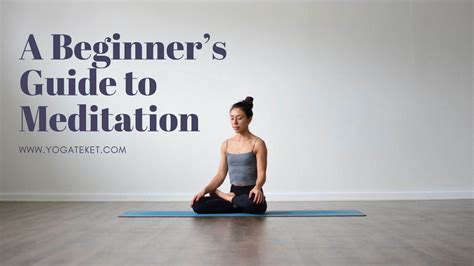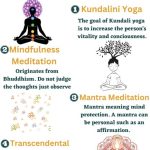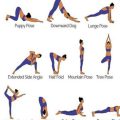Mastering Meditation for Yoga Beginners: A Comprehensive Guide
Meditation is often an integral part of yoga practice, especially for beginners seeking a deeper connection between mind and body. While yoga focuses on physical postures (asanas), meditation emphasizes mindfulness and mental clarity. This guide offers an extensive look at meditation techniques, their benefits, and how to incorporate them into your yoga routine, ensuring a holistic approach to wellness. Whether you’re just starting out or looking to deepen your practice, this article covers all the essentials you need to know.
Introduction
For yoga beginners, meditation can seem like an abstract concept—something intangible and difficult to grasp. However, meditation, when practiced consistently, can enhance your yoga practice, relieve stress, improve concentration, and even lead to greater self-awareness. In this guide, we’ll explore different aspects of meditation in yoga, providing a step-by-step breakdown of techniques, benefits, and challenges, all while addressing misconceptions that beginners commonly encounter. From historical roots to modern-day applications, meditation can be a powerful tool for those embarking on their yoga journey.
Key Concepts
- Mindfulness: The practice of being fully present in the moment, acknowledging thoughts and feelings without judgment.
- Breath Awareness: Focusing on the breath to calm the mind and body, a core element of both meditation and yoga.
- Concentration: Directing attention to a single point of focus, whether it’s your breath, a sound, or a mantra.
- Relaxation: Releasing physical tension and mental stress through deep breathing and mindful body scans.
- Mantras: Repetitive sounds or phrases used to help focus the mind and aid concentration during meditation.
Historical Context
Meditation has deep roots in spiritual traditions, dating back thousands of years. In yoga, meditation was primarily developed in India as part of the broader system of achieving moksha or liberation. Classical yoga texts like the Yoga Sutras of Patanjali outline eight limbs of yoga, one of which is Dhyana, or meditation. Over time, meditation practices have evolved, influenced by Buddhist, Hindu, and even secular traditions. Today, meditation is widely recognized as a beneficial practice that transcends its spiritual origins to promote general well-being.
Current State Analysis
In the modern yoga landscape, meditation has been adapted for a variety of needs, from stress relief to personal growth. It’s common for yoga classes to include a brief meditation at the beginning or end of the session. Yoga and meditation apps are increasingly popular, giving users easy access to guided practices tailored to beginners. However, there remains a wide gap between the simplicity of instructions and the depth of experience that meditation offers. Many beginners face challenges such as restlessness, doubt, and difficulty in focusing. Understanding these obstacles and adopting practical solutions is essential for making meditation a sustainable part of your yoga practice.
Practical Applications
For yoga beginners, integrating meditation into your routine can start small. Here are a few ways to begin:
- Breath-Focused Meditation: Begin and end your yoga sessions with 5-10 minutes of breath awareness. Focus on the rise and fall of your abdomen or the sensation of air passing through your nostrils.
- Guided Meditation: Use a meditation app or listen to guided meditations focused on relaxation and mindfulness.
- Walking Meditation: Try incorporating mindfulness during simple walking exercises, particularly useful if sitting still feels difficult at first.
- Posture Awareness: During yoga, treat each pose as a mini-meditation by focusing on the breath and bodily sensations.
Case Studies
| Case Study | Initial Challenge | Meditation Solution | Outcome |
|---|---|---|---|
| Beginner A: Struggling with Anxiety | Difficulty concentrating in yoga class due to racing thoughts. | Incorporated daily 10-minute mindfulness meditation practice. | Reduced anxiety, improved focus in yoga and daily life. |
| Beginner B: Physical Tension | Unable to relax in seated poses due to muscle tightness. | Practiced body scan meditation before yoga sessions. | Improved physical relaxation and increased flexibility in poses. |
| Beginner C: Impatience | Found meditation boring and hard to sit through. | Started with walking meditation and breath-focused exercises. | Gradually increased tolerance for seated meditation over time. |
| Beginner D: Lack of Motivation | Inconsistent meditation practice. | Joined a meditation group and used accountability partners. | Developed a regular practice that enhanced their yoga sessions. |
| Beginner E: Sleep Issues | Struggled with insomnia and found it hard to relax in yoga class. | Introduced a 15-minute evening meditation routine. | Reported better sleep quality and improved relaxation in yoga. |
Stakeholder Analysis
There are multiple stakeholders in the realm of meditation for yoga beginners, each bringing unique perspectives and needs:
- Beginners: Seeking accessible techniques to overcome stress and improve focus.
- Yoga Instructors: Aim to incorporate meditation to complement physical practice and promote a well-rounded experience.
- Mental Health Professionals: Encourage meditation as a therapeutic tool for managing anxiety, depression, and other conditions.
- Tech Companies: Developing meditation apps to provide guidance and support for beginners.
- Spiritual Communities: Promote meditation as a way to achieve deeper spiritual understanding and self-awareness.
Implementation Guidelines
For beginners looking to implement meditation alongside their yoga practice, here are some simple guidelines:
- Start Small: Begin with short, 5-10 minute sessions to avoid overwhelming yourself.
- Consistency Over Length: Daily meditation is more beneficial than occasional long sessions.
- Use Props: Sitting on a cushion or blanket can make seated meditation more comfortable.
- Find a Quiet Space: Dedicate a distraction-free space in your home for meditation practice.
- Be Patient: Meditation progress is gradual, and it’s normal to feel restless or distracted at first.
- Integrate with Yoga: Align your breath work during meditation with the flow of your yoga practice.
Ethical Considerations
Incorporating meditation into yoga practice should be approached with sensitivity to cultural and ethical contexts. Yoga, including meditation, has deep cultural roots in India. It’s important for practitioners to honor these traditions and avoid appropriating or misrepresenting them. Additionally, meditation teachers should ensure that practices are inclusive and adaptable, respecting each individual’s physical, mental, and emotional limits. Inclusivity is particularly important in meditation classes or apps, where language should be neutral and non-judgmental.
Limitations and Future Research
Although meditation has numerous proven benefits, its effects can vary based on individual circumstances. One limitation is the difficulty beginners may face in establishing a consistent practice due to modern-day distractions and time constraints. Future research could focus on exploring the neurophysiological effects of meditation within a yoga context, particularly for beginners. Additionally, more studies are needed to determine the long-term effects of integrating meditation and yoga for physical and mental well-being. As meditation becomes more mainstream, ensuring its accessibility to diverse populations will also be crucial for its sustained impact.
Expert Commentary
Meditation, when combined with yoga, offers a powerful pathway to mindfulness, stress relief, and self-awareness. Experts across disciplines agree that the synergy between these practices enhances both physical and mental well-being. However, starting small and building a sustainable routine is essential for beginners. Additionally, while apps and guided meditations are helpful tools, the deeper value of meditation comes from consistent, mindful practice. By addressing common misconceptions and offering practical solutions, yoga beginners can cultivate both physical and mental flexibility, ultimately leading to greater life satisfaction.








